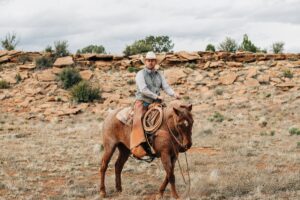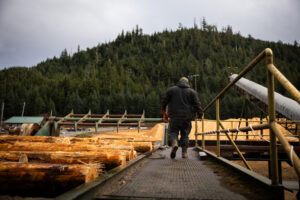Lighthiser v. Trump: Why freedom and abundance, not climate catastrophizing, are key to human prosperity

Last month Pacific Legal Foundation formally launched the Environment and Natural Resources practice group. The core message is simple: Let’s build an environmental future rooted not in fear, but in freedom and abundance. Environmental and natural resource issues are best solved when rooted in principles of liberty, human flourishing, and constitutional government. Our climate has changed throughout history and continues to evolve today, with humans consistently innovating to address externalities as they arise. When free to prosper, societies harness human ingenuity to adapt creatively.
Yet over the past decade, youth-led climate litigation has surged in courts, seeking to establish a judicially created regulatory regime that would stifle the freedom needed to harness our resources for human betterment. While some youth plaintiffs have found success in state courts, they have yet to replicate that success at the federal level. In March, the U.S. Supreme Court declined to hear Juliana, a youth-led climate case claiming the federal government infringed on constitutional rights by enacting policies that contribute to hazardous carbon dioxide levels.
But while the Department of Justice celebrated this victory, youth-led climate groups were undeterred. In May, they filed a new lawsuit in the District Court of Montana, targeting three executive orders by the Trump administration.
These youth-led climate suits stem from fear and misguided demands for government control. If America’s youth intend to confront climate problems, freedom—not fear—is the solution.
Youth litigation: A fear-driven approach
The plaintiffs in Lighthiser, a group of 22 children and youth, claim that various executive orders issued by the Trump administration violate the Fifth Amendment’s substantive due process clause by promoting fossil fuel production and suppressing climate science, thereby infringing on their fundamental rights to life and liberty. They argue that the government’s failure to curb greenhouse gas pollution constitutes a state-created danger, endangering present and future generations by exacerbating climate harms.
On their face, the challenged executive orders represent a welcome shift in environmental policy by reorienting environmental agencies around abundance, emphasizing that the proper goal of environmental policy is to enable responsible, innovative, and sustainable use of natural resources, rather than restricting them. But the plaintiffs in Lighthiser take a bleaker view. The group’s complaint is driven by fears of catastrophic climate impacts and anxiety about the future. The plaintiffs expect climate change to cause devastating losses to their economic livelihoods and the environment.
But the plaintiffs’ request for top-down mandates not only ignores the rule of law; it also ignores the complexity of climate science and undermines individual liberty. The plaintiffs want courts to revoke agency directives that will free up markets and promote the use of America’s vast natural resources. They seem unconcerned that disrupting energy markets and stripping individuals of their freedom to choose energy sources will continue to drive up prices of the resources we need to heat our homes, drive our cars, and provide power to the energy grid in the future. Likewise, their call for judicial intervention to enforce broad environmental policies overlooks private sector solutions and assumes that a centralized government can unilaterally solve climate risks, an assumption that the past 50 years of government control has not borne out. This approach sidelines individual creativity and community strength, favoring bureaucracy over free-market progress that has historically driven innovation in America.
This fear-driven approach to climate change highlights the disconnect youth-led climate groups have in confronting the problem, overlooking that liberty, not control, is the path to human flourishing and a better future.
Freedom is the solution
Freedom to move, innovate, invest, and use resources productively empowers people to adapt and thrive, enabling them to develop creative solutions to combat challenges such as climate change. This liberty allows individuals and communities to harness their ingenuity, whether through building resilient infrastructure or adopting new technologies. Embracing this principle will foster a dynamic and prosperous society that is ready to meet the demands of the future.
Energy and natural resource use improves lives by powering essential services, supporting economic growth, and enhancing quality of life. PLF’s recent report highlights the safe, clean, and efficient use of energy as key to reducing poverty. This connection is reinforced by the report’s findings that increased energy use correlates with higher per capita GDP. Restricting natural resource use, on the other hand, imposes tangible negative costs on human well-being, driving up prices for essential goods like food and fuel and harming the most vulnerable among us by limiting their opportunities for prosperity. America’s future demands abundant energy to fuel emerging technologies like AI, a critical point the Lighthiser plaintiffs miss with their focus on restriction rather than innovation. America’s youth need access to resources to compete globally; reversing scarcity-driven policies will secure prosperity. America’s youth must transition to a mindset of abundance, which will drive the innovation needed to confront climate change.
The outcome of Lighthiser remains to be seen. The federal government has moved to dismiss the case, and Montana and a coalition of 18 other states have moved to intervene in the lawsuit, moving to dismiss, with a hearing scheduled in September. Whatever the outcome may be, the most critical takeaway is that public debate must shift away from extreme projections and alarmism. America’s youth must rethink climate solutions. Every generation has faced its own unique set of challenges, but one constant has always remained: Freedom is the answer.





